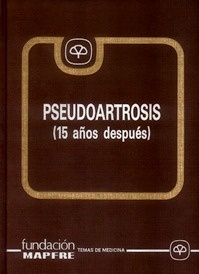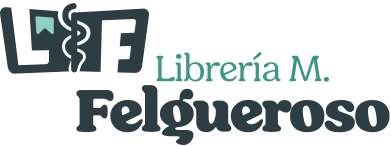Reseña o resumen
A comprehensive and accessible resource covering all aspects of forensic and legal medicine. The text provides a foundation for those working in both the clinical and forensic aspects of care and will also be an asset to those involved in the police or judicial systems. Including clear guidelines for practical applications, and further enhanced by its many illustrations and case examples, this text is a valuable resource in an increasingly complex field. The authoritative work is written by those who have extensive experience for a wide audience including, but not limited to, forensic pathologists, general pathologists, pediatric pathologists, forensic physicians, forensic scientists, coroners, emergency department physicians, judges and legal practitioners.
Chapter 62 of this book is freely available as a downloadable Open Access PDF at http://www.taylorfrancis.com under a Creative Commons Attribution-Non Commercial-No Derivatives (CC-BY-NC-ND) 4.0 license.
Section 1: Principles of Forensic & Legal Medicine
History and Current Status of Forensic and Legal Medicine. Ethical Principles Involved in International Forensic Medical Examinations. Human Rights Law. Euthanasia. Professional Conduct - Medical Practitioners. Professional Conduct Nurses. Professional Conduct Paramedics. The Role of Medical Defence Organisations. Principles of Forensic and Medico-Legal Death Investigation. Role of the Coroner in England & Wales. Role of the Medical Examiner in England & Wales. Principles of Investigation of War Crimes and Torture & Cruel, Inhuman and Degrading Treatment & Other Matters. The Role of the United Nations and NGOs in the Scrutiny of and Prevention of Torture and Other CIDT. Providing Evidence for Courts. Pathophysiology of Wound Healing. Ageing of Injuries in the Living and Deceased.
Section 2: Forensic Pathology
Identification of the Deceased. Timing of Death. Age Estimation in the Deceased. Medico-Legal Autopsy. Hospital Autopsy. Minnesota Protocol.Forensic Post-Mortem Imaging and Associated Technologies. Death from Natural Causes. Pathophysiology of COVID-19. Vehicular-Related Deaths. Aviation Deaths. Custody & Restraint Death. Environmental Issues. Infant and Childhood Deaths. Maternal Death. Autopsies after Surgery and Percutaneous Interventions. Drowning. Lethal Asphyxia. Head Trauma Deaths. Neck Trauma Deaths. Spinal Trauma Deaths. Chest and Abdominal Trauma. Musculoskeletal Trauma Deaths. Sports-Related Deaths. Sharp Force Injuries. Blunt Force Injuries and Death. Falls from Heights. Burns & Fire Deaths. Hypothermia Deaths. Heat Deaths. Electrical Deaths. Elder Abuse. Death by Suicide. Homicides. Cardiac Death (Genetic and Non-Genetic). Neglect. Self-Neglect. Starvation Deaths. Drug Deaths. Poison Deaths. Fatalities Associated with Sexual Activity. Autoerotic Deaths. Dowry Deaths and Honor Killings. Femicide. Gunshot, Firearm Deaths & Blast Trauma. The Physiology of Ballistics and Blast Trauma.
Section 3: Clinical Forensic Medicine
Role of the Forensic Physician. Role of the Sexual Offence Examiner. Role of the Custody Nurse and Paramedic. Fitness to Detain & Fitness to Interview. Traffic Medicine. Child Protection. Substance Misuse in Detention. Novel Psychoactive Substances. Restraint and Control Techniques. Acute Behavioural Disturbance and Excited Delirium Syndrome. Child Abuse and Neglect. The Istanbul Protocol. Injury Documentation and Interpretation. Imaging of Trauma in the Living. Imaging of Suspected Non-Accidental Injury. Evidential Sampling. Minimising DNA Contamination. Findings after Sexual Assault Adult. Findings After Sexual Abuse Children. Sexually Transmitted Infections Following Sexual Assault. Self-injury. Non-Fatal Strangulation. Crowd Control Techniques: Perspectives on the Type and Use of Weapons by Police Around the World. Conducted Energy Devices. Female Genital Mutilation. Herbal Medicines.
Section 4: Forensic Science and Related Specialities
Principles of Crime Scene Management. Biological, Chemical & Radioisotope Trauma & Associated Personal Protective Equipment. The Forensic Photography of Injuries. Forensic Odontology. Forensic Toxicology. Forensic Microbiology. DNA Analysis in Forensic Investigations. Disaster Victim Identification. Blood pattern analysis. Forensic Anthropology. Veterinary Forensic Medicine. Media Engagement in Forensics. Misinterpretation and Fallacies in Forensic Evidence. Forensic Entomology. Age estimation in the living

